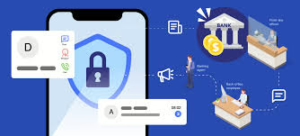Analysis of Alternatives to Savings Accounts for Singaporeans
Let me analyze the various alternatives to traditional savings accounts mentioned in the article, along with their pros and cons for Singaporeans.
Fixed Deposits (FDs)
Pros:
- Relatively safe with deposit insurance coverage up to $100,000 per depositor per bank
- Currently offering rates around 2-2.45% (with Maybank offering promotional rates of 2.7-2.9%)
- Predictable returns with guaranteed principal
- No investment knowledge required
Cons:
- Rates have dropped significantly from 4% in 2023
- Funds are locked for the tenure period (usually inflexible)
- May require minimum deposit amounts (Maybank requires $20,000 minimum)
- Special promotions may have conditions (e.g., Maybank requires additional funds in a savings account that are also locked up)
- Returns are typically lower than inflation in the long term
Treasury Bills (T-bills)
Pros:
- Fully backed by Singapore Government (Triple-A rated)
- Recent yields of 2.5% (6-month) and 2.95% (1-year)
- Extremely low credit risk
- A regular auction schedule provides predictable investment opportunities
Cons:
- Less liquid than savings accounts
- No early redemption option (though can be sold in secondary market)
- Fixed auction schedule may not align with your investment timeline
- Minimum investment requirements
- Returns may not beat inflation
Singapore Savings Bonds (SSBs)
Pros:
- Backed by Singapore Government (Triple-A rated)
- Current returns of 2.69% on average for 10 years (2.49% for 1 year)
- Interest rates step up over time, rewarding longer holding periods
- Flexible redemption with no penalty (monthly redemption windows)
- Relatively low minimum investment amount
Cons:
- Returns are lower than during peak interest rate periods
- Interest is paid semi-annually rather than compounded
- Requires advance planning for redemptions (specific monthly windows)
- It may not be suitable for very short-term needs (under 6 months)
Money Market Funds
Pros:
- Higher liquidity than fixed deposits and government securities
- Invests in low-risk instruments (FDs, government securities, commercial paper)
- Professional management and diversification
- Access to institutional investments that retail investors couldn’t access directly
- Redemption is typically available within a few business days
Cons:
- Not covered by Deposit Insurance Scheme
- Returns fluctuate based on market conditions
- Management fees eat into returns
- Slightly higher risk than bank deposits or government securities
- Returns may still struggle to beat inflation
Short-Duration Bond Funds
Pros:
- Generally higher yields than savings accounts and money market funds
- Lower volatility compared to longer-duration bond funds
- Professional management and diversification
- Suitable for 1-3 year investment horizons
- More liquid than individual bonds
Cons:
- Capital is not guaranteed; value can fluctuate
- Not covered by deposit insurance
- Management fees impact overall returns
- Some interest rate risk (though less than longer-duration bonds)
- Credit risk depends on the underlying bond portfolio
Longer-Term Bond Portfolios (5-7 years)
Pros:
- Potentially higher yields than shorter-term alternatives
- The portfolio approach diversifies across multiple bonds
- Can “lock in” relatively higher yields in a declining rate environment
- Income generation through regular interest payments
- Professional management if using a fund
Cons:
- Higher interest rate risk than shorter-duration bonds
- More extended commitment period for optimal results
- More tremendous potential for price volatility
- Not suitable for near-term financial needs
- Management fees for bond funds
Strategic Considerations for Singaporeans
- The layered approach as suggested in the article, makes sense:
- Keep immediate needs and emergency funds in high-yield savings accounts
- Short-term needs (6 months) in FDs, T-bills or money market funds
- Medium-term needs (6-24 months) in SSBs or short-duration bonds
- Longer-term funds in a more diversified portfolio
- Take advantage of bank bonus structures:
- Some banks offer bonus interest for investment and insurance products
- Consider consolidating banking relationships to maximize interest benefits
- Review whether the “bundled” products actually meet your needs
- Tax efficiency:
- Interest income in Singapore is generally not taxable for individuals
- Makes these fixed-income options more attractive compared to countries with interest income tax
- Inflation protection:
- Singapore’s inflation has been around 3-4% in recent years
- Most of these options may struggle to beat inflation
- Consider whether some allocation to growth assets is necessary for long-term funds
- Accessibility trade-offs:
- More liquid options typically offer lower returns
- Consider your actual liquidity needs before locking up funds
The overall environment is shifting toward lower interest rates, making it essential for Singaporeans to be strategic about their cash management rather than simply keeping everything in savings accounts.
Best Savings Options for Low-Income Singaporeans
For low-income savers in Singapore, the best options balance accessibility, low minimum requirements, guaranteed safety, and reasonable returns. Here’s my analysis of what might work best:
Singapore Savings Bonds (SSBs)
Why they’re good for low-income savers:
- Very low minimum investment of just $500
- Fully government-backed (extremely safe)
- No penalty for early redemption if you need your money
- Current return of 2.49% for 1-year holding (higher than most savings accounts)
- Monthly application windows provide regular opportunities to invest
- No fees to purchase (unlike some investment products)
- Interest paid every 6 months provides regular income
- Can redeem at any monthly window with no penalty
This is likely the best overall option for low-income savers who can set aside at least $500.
High-Yield Savings Accounts
Advantages for low-income savers:
- No minimum lock-up period
- Immediate access to funds for emergencies
- Some accounts have low or no minimum balance requirements
- Still offering reasonable rates (though declining)
- Covered by deposit insurance up to $100,000
- No investment knowledge required
Consider keeping emergency funds and immediate needs here.
Treasury Bills (T-bills)
Considerations for low-income savers:
- Minimum investment of $1,000 (higher than SSBs)
- Slightly higher yields than SSBs at short durations (6 months at 2.5%)
- Government-backed security
- Less flexible than SSBs (no early redemption option)
- Auctions every two weeks for 6-month bills
A good option if you can commit funds for the whole 6-month or 1-year period.
Fixed Deposits with Lower Minimums
For low-income savers:
- Look specifically for promotions with lower minimum amounts
- Some banks offer FDs starting from $1,000 or $5,000
- Avoid options like the Maybank promotion that requires $20,000
- Check for online-only FD promotions which sometimes have better rates
- Compare across different banks for the best rates and terms
Money Market Funds
Limited appeal for low-income savers because:
- Many have higher minimum investments ($1,000-$5,000)
- Management fees reduce returns
- Not covered by deposit insurance
- Slightly more complex to understand and access
- May require opening an investment account
Practical Strategy for Low-Income Savers
- Start with a basic emergency fund in a high-yield savings account (3-6 months of expenses)
- Consider SSBs for any additional savings of at least $500 that you can set aside.
- Ladder your SSBs by buying smaller amounts monthly or quarterly
- Take advantage of GIRO for regular automated savings to build your funds
- Check if you qualify for government assistance programs like Workfare Income Supplement
Additional Considerations
- Avoid products with high fees or complex conditions
- Don’t chase slightly higher returns at the expense of safety and liquidity
- Be wary of minimum balance requirements that might lead to penalty fees
- Consider if your bank offers fee waivers for low-income customers
- Review if you’re eligible for CPF top-ups, which offer guaranteed interest rates (4% for Ordinary Account, 5% for Special Account)
For low-income savers in Singapore, Singapore Savings Bonds offer the best combination of safety, reasonable returns, low minimum investment, and flexibility to access funds if needed. They should form the core of your savings strategy beyond your emergency fund.
Crisis Banking Options for Singaporeans
During financial crises or banking emergencies, it’s essential to understand your options for protecting your savings. Here’s an explanation of crisis banking options that Singaporeans might consider:
Deposit Insurance Protection
Singapore Deposit Insurance Corporation (SDIC):
- Automatically protects Singapore dollar deposits up to $75,000 per depositor per bank
- Covers deposits in savings, current, and fixed deposit accounts
- Insurance activates automatically if a bank fails
- No action is required by depositors to receive this protection
Government-Backed Securities
During crises, these become particularly valuable due to their safety:
Singapore Savings Bonds (SSBs):
- Fully backed by the Singapore Government
- Can be redeemed in any month with no penalty
- Provides liquidity during uncertain times
- Not affected by banking system issues
Treasury Bills (T-bills):
- Direct government obligations
- Extremely low default risk
- Can be sold in the secondary market if needed during a crisis
Emergency Liquidity Options
Cash Holdings:
- Keep a reasonable amount of physical cash at home for immediate emergency needs.
- Experts often suggest having 1 to 2 weeks of expenses in cash during uncertain times.
Multiple Banking Relationships:
- Maintain accounts across 2-3 different banks to diversify risk
- Ensures access to funds if one institution faces operational issues
Crisis-Specific Banking Facilities
During past financial crises, Singapore has implemented:
Special Liquidity Facilities:
- MAS (Monetary Authority of Singapore) may establish emergency funding channels
- During the 2008 financial crisis, Singapore established a US$30 billion swap facility with the US Federal Reserve
- Similar measures could be deployed in future crises
Blanket Guarantees:
- During the 2008 financial crisis, Singapore temporarily guaranteed all Singapore dollar and foreign currency deposits of individuals and non-bank customers
- Such extraordinary measures might be implemented in severe situations
Practical Crisis Preparation
Account Diversification:
- Keep funds spread across different institutions
- Include at least one local bank with strong government ties (DBS, OCBC, UOB)
- Consider a mix of local and foreign banks for different exposure
Digital Banking Preparation:
- Ensure you have working online and mobile banking access
- Keep authentication devices (tokens, phones) charged and accessible
- Know how to perform essential transactions remotely
Documentation:
- Keep physical copies of key account information
- Store digital backups of important financial documents
- Have account numbers, bank contact information, and NRIC readily available
Singapore’s Banking System Strength
Singapore’s banking system has several crisis-resistant features:
- Strong capitalization requirements exceeding international standards
- Conservative lending practices and low non-performing loan ratios
- Close supervision by MAS with stress tests and liquidity requirements
- History of government intervention to maintain financial stability
During a financial crisis, Singapore’s robust regulatory framework and the government’s commitment to financial stability provide significantly greater protection for depositors than many other countries.
The most practical approach for individual Singaporeans is to ensure deposits are within the SDIC coverage limits, maintain relationships with multiple banks, hold some government securities, and keep adequate emergency cash.
In an increasingly interconnected and digital world, the threat of scams has become a pervasive challenge, demanding innovative and collaborative solutions. Recognizing this urgent need, the Singapore Police Force’s (SPF) Anti-Scam Centre (ASC) has forged a powerful alliance with four major banks – DBS Bank, OCBC Bank, Standard Chartered Bank, and UOB Bank – resulting in the successful disruption of over 900 ongoing scams. This concerted effort, spanning the beginning of 2025, targeted a diverse range of fraudulent activities, including enticing job scams, high-pressure investment scams, emotionally manipulative fake-friend call scams, and deceptive e-commerce scams. The tangible outcome of this partnership is the prevention of significant financial losses, highlighting the effectiveness of proactive collaboration in the fight against cybercrime.
A key element underpinning the success of this partnership lies in the strategic implementation of Robotic Process Automation (RPA) technology. This innovative approach has fundamentally altered the speed and efficiency of information sharing between the ASC and the participating banks. RPA allows for the rapid and automated exchange of critical data related to potentially fraudulent transactions and suspicious activities. This, in turn, enables the swift identification of potential scam victims, providing a crucial window of opportunity for timely intervention and the prevention of further financial losses. The real-time intelligence provided by RPA empowers both the ASC and the banks to act decisively and proactively, staying one step ahead of the ever-evolving tactics of scammers.
Between January 1, 2025, and February 28, 2025, the collaborative efforts of the ASC and its banking partners manifested in a proactive communication strategy. Over 9,000 targeted SMS messages were dispatched to more than 7,000 bank customers who had been identified as potential scam victims. These messages served as crucial warnings, alerting individuals to suspicious activity and prompting them to take immediate action to protect their accounts. This proactive measure proved remarkably effective, averting over $58 million in potential losses. These were funds that would have otherwise been siphoned off by malicious actors, underscoring the significant impact of the collaborative and technology-driven approach. The sheer magnitude of the averted losses serves as a stark reminder of the financial devastation that scams can inflict on individuals and the importance of preventative measures.
Beyond the direct intervention efforts, the Singapore Police Force recognizes the critical role of public awareness and education in preventing scams. The SPF urges the public to adopt a proactive approach to scam prevention by remembering to “ACT” against scams, an easily memorable acronym that encapsulates key preventive steps.
ADD: This component emphasizes the importance of enhancing digital security. Individuals are encouraged to bolster their online defenses by adding security features such as the ScamShield application, which helps to identify and block scam calls and messages. Enabling two-factor authentication (2FA) for personal accounts, including bank accounts, social media profiles, and Singpass accounts, adds an extra layer of protection, making it significantly more difficult for scammers to gain unauthorized access. Furthermore, setting transaction limits for internet banking, including PayNow, can help limit potential losses in the event that an account is compromised. These measures act as a digital shield, minimizing vulnerability to scam tactics.
CHECK: Vigilance is paramount in the fight against scams. This component encourages individuals to be observant and carefully check for potential signs of a scam. This includes asking probing questions, verifying requests for personal information or money transfers, and meticulously confirming the legitimacy of online listings and reviews. The SPF emphasizes the importance of pausing and checking before acting impulsively on any request or offer. This critical pause allows individuals to assess the situation rationally and identify potential red flags. A key principle to remember is that if an offer seems too good to be true, it likely is a scam. This healthy skepticism can be a powerful tool in avoiding falling victim to fraudulent schemes.
TELL: Reporting scam encounters is crucial not only for personal protection but also for contributing to the broader fight against cybercrime. This component encourages individuals to report scam encounters to the authorities, providing valuable information that can help to track down and apprehend scammers. Reporting scams to the bank, ScamShield, or by filing a police report allows law enforcement to investigate and disrupt ongoing scam operations. Additionally, sharing information about ongoing scams and preventive steps with friends and family helps to raise awareness and protect others from falling victim to similar schemes. Reporting fraudulent pages and accounts to the relevant platforms helps to remove them from circulation, preventing further harm. By sharing information and reporting suspicious activity, individuals can actively contribute to a safer online environment.
The Singapore Police Force’s commitment to combating scams extends beyond reactive measures and focuses on fostering a culture of awareness and proactive prevention. By empowering the public with the knowledge and tools to “ACT” against scams, the SPF aims to create a more resilient and secure society.
For more information on scams, individuals are encouraged to visit www.scamshield.gov.sg or call the ScamShield Helpline at 1799. Anyone with information on scams can call the Police Hotline at 1800-255-0000 or submit information online at www.police.gov.sg/iwitness. All information will be kept strictly confidential, ensuring that individuals can report suspicious activity without fear of reprisal.
The successful collaboration between the Singapore Police Force, the Anti-Scam Centre, and partner banks serves as a powerful example of how proactive partnerships, technological innovation, and public awareness can effectively combat the growing threat of scams in the digital age. By remaining vigilant, informed, and proactive, individuals and organizations alike can contribute to creating a safer and more secure online environment for all.
Analysis of Singapore’s Scam Prevention Approach
Government and Institutional Measures

Based on the article, Singapore has implemented several institutional approaches to combat scams:
- Monetary Authority of Singapore (MAS) Initiatives:
- Working directly with banks to enhance digital banking security
- Implementing new protective measures like eliminating clickable links in official emails/SMSes
- Requiring a minimum 12-hour delay before activating new soft tokens on mobile devices
- Providing specific guidance to banking customers on safe practices
- Police Force Involvement:
- The Singapore Police Force (SPF) actively tracks and reports on scam statistics
- Conduct investigations of scammers and money mules (as evidenced by the case involving 170 men and 89 women)
- Shares examples and screenshots of scams to raise public awareness
- Banking Sector Protections (specifically highlighted for DBS):
- Stopping non-essential SMSes with links
- Sending only essential communications like security notifications and OTP authentication
- Implementing default transaction notification thresholds (S$100)
- Providing in-app security features like card locking and customizable spending limits
- Offering digital tokens with enhanced encryption

Effectiveness Analysis
The approach appears to be multi-faceted, combining:
- Technical barriers: Implementing security features that make scamming more difficult
- Public education: Raising awareness about standard scam techniques
- Enforcement: Actively investigating scam cases
However, the rising scam statistics mentioned (16% increase in cases, with amounts cheated rising from S$63.5M to S$168M) suggest these measures may be struggling to keep pace with evolving scam techniques.

Strengths of Singapore’s Approach
- Coordinated response: Collaboration between regulatory bodies (MAS), law enforcement (SPF), and financial institutions
- Customer-focused solutions: Tools that give customers more control over their security
- Practical implementation: Specific, actionable measures rather than just general advice

Potential Gaps and Recommendations
- Technology gap: The article doesn’t mention advanced detection technologies like AI for identifying unusual transaction patterns
- Demographic considerations: No specific mention of tailored approaches for vulnerable groups like seniors
- Private sector cooperation: Limited discussion of how businesses beyond banks are involved in prevention
- International coordination: No mention of cooperation with other countries to address overseas-based scammers
Singapore’s approach appears to be comprehensive but could potentially benefit from more advanced technological solutions and broader cooperation across sectors and borders to address the evolving nature of scams.
Social Engineering: Anatomy of Manipulation and Defense
Social Engineering Techniques
Psychological Manipulation Strategies
- Authority Impersonation
- Scammers pose as official representatives (e.g., bank officers, government officials)
- Exploit victims’ respect for authority and tendency to comply with perceived authoritative figures.
- Use official-sounding language, titles, and fabricated credentials.

- Fear and Urgency Tactics
- Create artificial time pressures to prevent critical thinking
- Trigger emotional responses like panic or anxiety
- Common threats include:
- Legal consequences
- Financial penalties
- Account suspension
- Potential criminal investigations

- Trust Building and Rapport
- Develop a seemingly genuine conversational flow
- Use personal details to appear credible
- Gradually escalate requests, starting with minor, seemingly innocuous asks
- Exploit human tendency to be helpful and avoid confrontation

- Information Harvesting
- Collect fragmentary personal information from multiple sources
- Use social media, public databases, and previous data breaches
- Craft highly personalized, convincing narratives
Technical Manipulation Methods
- Phishing Techniques
- Spoofed communication channels
- Lookalike websites and email addresses
- Malicious links and attachments
- Screen sharing and remote access exploitation

- Multi-Stage Scam Progression
- Complex narratives involving multiple fake personas
- Gradual erosion of victim’s skepticism
- Continuous redirection and technical jargon
Prevention Strategies
Personal Awareness and Education

- Critical Thinking Development
- Always verify unsolicited communications independently
- Use official contact methods from verified sources
- Never click links or download attachments from unknown sources
- Recognize and resist emotional manipulation

- Communication Red Flags
- Unsolicited contact requesting personal information
- Pressure to act immediately
- Requests for financial transfers
- Communication via unofficial channels
- Threats or aggressive language

Technical Protective Measures
- Digital Security Practices
- Use multi-factor authentication
- Regularly update software and security systems
- Install reputable antivirus and anti-malware solutions
- Use dedicated communication and banking apps
- Enable transaction notifications

- Information Protection
- Minimize public personal information sharing
- Use privacy settings on social platforms
- Create complex, unique passwords
- Regularly monitor financial statements
- Use virtual credit cards for online transactions

Institutional and Technological Interventions
- Technological Defenses
- Implement AI-driven fraud detection systems
- Develop advanced caller ID and communication verification tools
- Create comprehensive scam reporting mechanisms

- Educational Initiatives
- Regular public awareness campaigns
- School and workplace training programs
- Clear, accessible resources on emerging scam techniques
- Collaborative efforts between government, tech companies, and financial institutions
Psychological Resilience

- Emotional Intelligence
- Recognize personal emotional triggers
- Practice calm, methodical responses to unexpected communications
- Develop healthy skepticism without becoming paranoid
- Community Awareness
- Share scam experiences
- Supporting vulnerable community members
- Create support networks for scam victims
Emerging Trends
- Increasing sophistication of AI in social engineering
- Cross-platform information integration
- More personalized, contextually relevant scam attempts
Conclusion
Social engineering exploits fundamental human psychological vulnerabilities. Comprehensive defense requires a multi-layered approach combining technological solutions, personal awareness, and continuous education.
Maxthon

Maxthon has set out on an ambitious journey aimed at significantly bolstering the security of web applications, fueled by a resolute commitment to safeguarding users and their confidential data. At the heart of this initiative lies a collection of sophisticated encryption protocols, which act as a robust barrier for the information exchanged between individuals and various online services. Every interaction—be it the sharing of passwords or personal information—is protected within these encrypted channels, effectively preventing unauthorised access attempts from intruders.
Maxthon private browser for online privacyThis meticulous emphasis on encryption marks merely the initial phase of Maxthon’s extensive security framework. Acknowledging that cyber threats are constantly evolving, Maxthon adopts a forward-thinking approach to user protection. The browser is engineered to adapt to emerging challenges, incorporating regular updates that promptly address any vulnerabilities that may surface. Users are strongly encouraged to activate automatic updates as part of their cybersecurity regimen, ensuring they can seamlessly take advantage of the latest fixes without any hassle.
In today’s rapidly changing digital environment, Maxthon’s unwavering commitment to ongoing security enhancement signifies not only its responsibility toward users but also its firm dedication to nurturing trust in online engagements. With each new update rolled out, users can navigate the web with peace of mind, assured that their information is continuously safeguarded against ever-emerging threats lurking in cyberspace.
